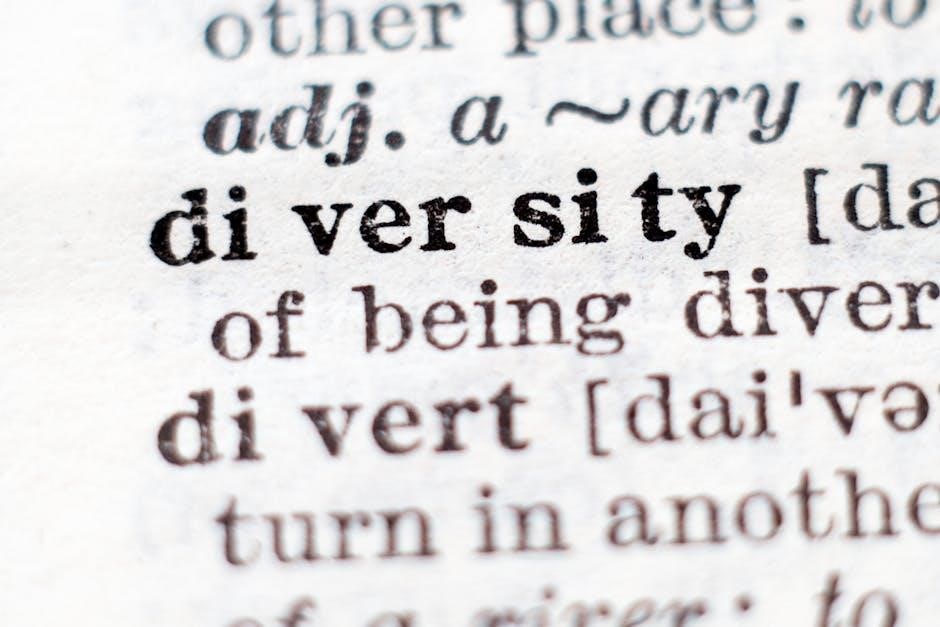reference letter pdf
A reference letter is a formal document endorsing an individual’s skills, character, or academic performance. It plays a crucial role in job applications, academic admissions, and professional opportunities. This guide provides insights into crafting effective reference letters, including templates, formats, and best practices to ensure clarity and professionalism.

Types of Reference Letters
Reference letters are categorized into academic, professional, and character types. Academic letters endorse students’ scholarly abilities, while professional letters highlight job-related skills and experiences. Character references focus on personal qualities and community involvement.
Academic Reference Letters
Academic reference letters are written by professors or educators to support students’ academic pursuits, such as university admissions or scholarships. They highlight the student’s intellectual abilities, academic achievements, and potential for success. These letters often include specific examples of academic performance, research skills, and contributions to class discussions. They are essential for showcasing a student’s readiness for advanced studies. Universities rely on these letters to assess candidates’ qualifications and fit for their programs.
Professional Reference Letters
Professional reference letters are typically written by supervisors or colleagues to validate an individual’s work experience, skills, and contributions. These letters are crucial for job applications, highlighting specific accomplishments, teamwork, and leadership abilities. They often include details about job responsibilities, achievements, and the impact of the individual’s work. Employers rely on these letters to assess a candidate’s suitability and reliability for a role, making them a vital part of the hiring process.
Character Reference Letters
Character reference letters are written to attest to an individual’s personal qualities, such as honesty, integrity, and reliability. They are often requested for legal purposes, volunteer opportunities, or educational applications. These letters highlight the writer’s personal knowledge of the individual, emphasizing their positive traits and moral character. Unlike professional references, they focus on personal qualities rather than work-related skills, providing a well-rounded view of the individual’s character and suitability for specific roles or opportunities.

What to Include in a Reference Letter
A reference letter should include the date, writer’s contact information, recipient’s name, relationship nature, and specific examples of the individual’s performance or character, ensuring clarity and credibility.
Date
The date is essential in a reference letter, providing context for the recommendation. Place it at the top of the page, typically in MM/DD/YYYY format. This detail ensures clarity and professionalism, helping recipients understand the timeline of the relationship or employment. Including the date also verifies the letter’s relevance and authenticity, making it a crucial element for both formal and informal purposes.
Writer’s Contact Information
The writer’s contact information is crucial for authenticity and follow-up. Include the writer’s full name, job title, institution or company, email address, and phone number. This ensures the recipient can verify the letter’s legitimacy and contact the writer for additional information. Placing this information below the date enhances the letter’s professionalism and credibility. Omitting contact details may diminish the letter’s impact and perceived reliability.
Name of the Individual Receiving the Letter
The name of the individual receiving the letter should be clearly stated to ensure the reference is properly addressed. Including their position, department, or program they are applying for adds context. This personalization helps tailor the letter to the recipient’s specific needs. Omitting this detail may lead to confusion or make the letter appear generic. Accuracy in naming is essential for professionalism and clarity in communication.
Nature of the Relationship
Clearly state the nature of the relationship between the writer and the individual, such as supervisor, professor, or colleague. Specify how long and in what capacity the writer has known the individual. This establishes credibility and context for the recommendation. Including specific examples of interactions or observations adds depth and authenticity to the letter, making it more impactful for the recipient. Clarity in describing the relationship is essential for professionalism and effectiveness.
Specific Examples of the Individual’s Performance
Include concrete examples that highlight the individual’s skills, achievements, and contributions. For instance, describe specific projects, tasks, or initiatives they excelled in, quantifying achievements where possible. Mention how they demonstrated problem-solving, leadership, or teamwork. Highlight soft skills like communication or adaptability. These examples should be relevant to the opportunity they are applying for, showcasing their qualifications and potential to succeed in their next endeavor effectively.
Format and Structure of a Reference Letter
A reference letter should follow a professional format, typically resembling a business letter. It includes a letterhead, date, greeting, body paragraphs, and a closing signature. The structure ensures clarity and professionalism, making it easy for the recipient to assess the individual’s qualifications effectively.
Formal Elements
A reference letter must include formal elements such as a letterhead or sender’s contact information, date, recipient’s address, salutation, and a professional closing. These elements ensure the letter’s credibility and professionalism. Proper formatting, including margins and font style, is also essential. The tone should be respectful and objective, avoiding informal language. Including these formal elements ensures the letter is taken seriously and meets standard professional expectations. Always ensure accuracy in details to maintain authenticity and trustworthiness.
Content Structure
A reference letter should follow a clear structure, starting with the sender’s contact information, date, and recipient’s details. The introduction states the purpose and relationship with the individual. The body highlights specific qualities, achievements, and examples of the individual’s performance. The conclusion reiterates the recommendation and offers contact information for further inquiries. This structured approach ensures clarity, professionalism, and effectiveness in conveying the endorsement. Proper organization is key to making the letter impactful and easy to read.
Sample Reference Letters
Sample reference letters provide examples of academic, professional, and character references. These templates guide users in creating effective endorsement documents tailored to specific needs and scenarios.
Academic Reference Letter Example
An academic reference letter example highlights a student’s academic achievements and qualities. It includes the student’s name, course details, and specific examples of their performance, such as research projects or grades. The letter also mentions the recommender’s relationship with the student and their qualifications to endorse them. It concludes with a strong recommendation for further studies or professional opportunities, showcasing the student’s potential and readiness for future challenges.
Professional Reference Letter Example
A professional reference letter example typically includes the writer’s contact information, the candidate’s job title, and specific examples of their skills and achievements. It highlights their responsibilities, work ethic, and contributions to the organization. The letter also mentions the duration of employment and the individual’s ability to collaborate with colleagues. It concludes with a strong endorsement for future job opportunities, emphasizing their reliability and professional competence.
Character Reference Letter Example
A character reference letter example focuses on the individual’s personal qualities, such as integrity, reliability, and community involvement. It is typically written by someone who knows the person in a non-professional capacity, like a friend, mentor, or volunteer supervisor. The letter highlights the individual’s moral character, willingness to help others, and ability to maintain positive relationships. It often includes specific anecdotes to illustrate these traits and concludes with a heartfelt endorsement of the individual’s good standing.
Downloading and Editing Reference Letter Templates
Download reference letter templates from trusted sources, customize them with personal details, and save as PDF for professional submissions.
Where to Find Templates
Reference letter templates are widely available online. Official websites of universities, companies, or professional organizations often provide downloadable templates. Platforms like Google Docs, Microsoft Word, and LaTeX repositories offer customizable options. Educational institutions and career services may also share templates. Additionally, websites specializing in document templates provide free and premium options for various purposes, ensuring you can find one tailored to your needs.
How to Customize Templates
Customizing reference letter templates involves tailoring the content to fit the individual’s specifics. Start by downloading a template in your preferred format, such as Word or Google Docs. Replace placeholder text with the writer’s contact information, the recipient’s details, and the individual’s name. Insert specific examples of the person’s achievements, skills, or character traits. Adjust the tone and language to match the context, ensuring clarity and professionalism. Save the finalized document as a PDF for a polished, shareable format.

Best Practices for Writing a Reference Letter
Be specific, use active voice, and keep the letter concise. Highlight key qualities and provide concrete examples to support your recommendation, ensuring clarity and professionalism throughout.
Be Specific
When writing a reference letter, it is essential to include specific details about the individual’s skills, achievements, and experiences. Avoid generic descriptions by providing concrete examples of their performance, such as projects, roles, or accomplishments. This helps the recipient understand the candidate’s strengths and suitability for the opportunity. Specificity adds credibility and makes the letter more impactful, ensuring it stands out and effectively supports the individual’s application or request.
Use Active Voice
Using active voice in a reference letter enhances clarity and professionalism. It ensures the reader easily understands the candidate’s contributions and achievements. For example, “Ms. Smith led the project” is more direct than “The project was led by Ms. Smith.” Active voice strengthens the letter’s impact, making it more engaging and concise. It also helps avoid ambiguity, ensuring the candidate’s skills and accomplishments are clearly highlighted, which is essential for a strong recommendation.
Keep It Concise
A reference letter should be concise and to the point, avoiding unnecessary details. Aim for a length of one page, focusing on the most relevant information about the individual. Avoid lengthy descriptions and ensure each paragraph highlights specific qualities or achievements. This approach maintains the reader’s attention and ensures the letter is professional and impactful. Brevity enhances clarity, making the recommendation more effective and easier to read.
Common Mistakes to Avoid
Avoid generic descriptions and ensure grammatical accuracy. Personalize the letter with specific examples to make it credible and impactful. Typos can undermine professionalism, so proofread thoroughly.
Generic Descriptions
Generic descriptions lack specific details, making the letter less impactful. Avoid vague statements like “good employee” or “hard worker” without examples. Instead, include specific achievements or qualities, such as “increased sales by 20% in six months” or “demonstrated exceptional problem-solving skills.” Specificity adds credibility and helps the recipient assess the individual’s true value.
Grammatical Errors
Grammatical errors in a reference letter can undermine its professionalism and credibility. Ensure the letter is free of typos, incorrect punctuation, and poor sentence structure. Always proofread the document or use tools like Grammarly to catch mistakes. Errors can distract from the candidate’s qualifications and may imply a lack of attention to detail, harming both the writer’s and the candidate’s reputation. Clarity and precision are essential for an effective reference letter.

Using PDF Format for Reference Letters
Using PDF format ensures professionalism and maintains the letter’s formatting across devices. It prevents unauthorized edits and is widely accepted for its reliability and visual consistency.
Why PDF is Preferred
PDF is preferred for reference letters due to its professionalism and consistency. It ensures the document’s formatting remains intact across all devices and platforms. PDFs are secure, preventing unauthorized edits, and maintain the letter’s integrity. They are also universally compatible, making them easy to share via email or upload online. This format is ideal for formal documents, as it enhances credibility and ensures the content is presented reliably.
How to Convert a Letter to PDF
To convert a reference letter to PDF, use tools like LaTeX or online converters. Save your document in a compatible format (e.g., DOCX) and upload it to a converter. Ensure the layout remains intact and proofread the PDF for accuracy. This method preserves formatting and ensures the letter is professionally presented. Online platforms offer free and efficient conversion options for quick access.
Crafting a well-structured reference letter in PDF format ensures professionalism and readability. By following guidelines, avoiding mistakes, and using templates, you can create impactful letters. PDFs preserve formatting, making them ideal for submissions. Remember to be specific, concise, and sincere in your recommendations. This approach ensures the letter effectively supports the individual’s goals, whether academic or professional. Always proofread and convert carefully to maintain a polished presentation.